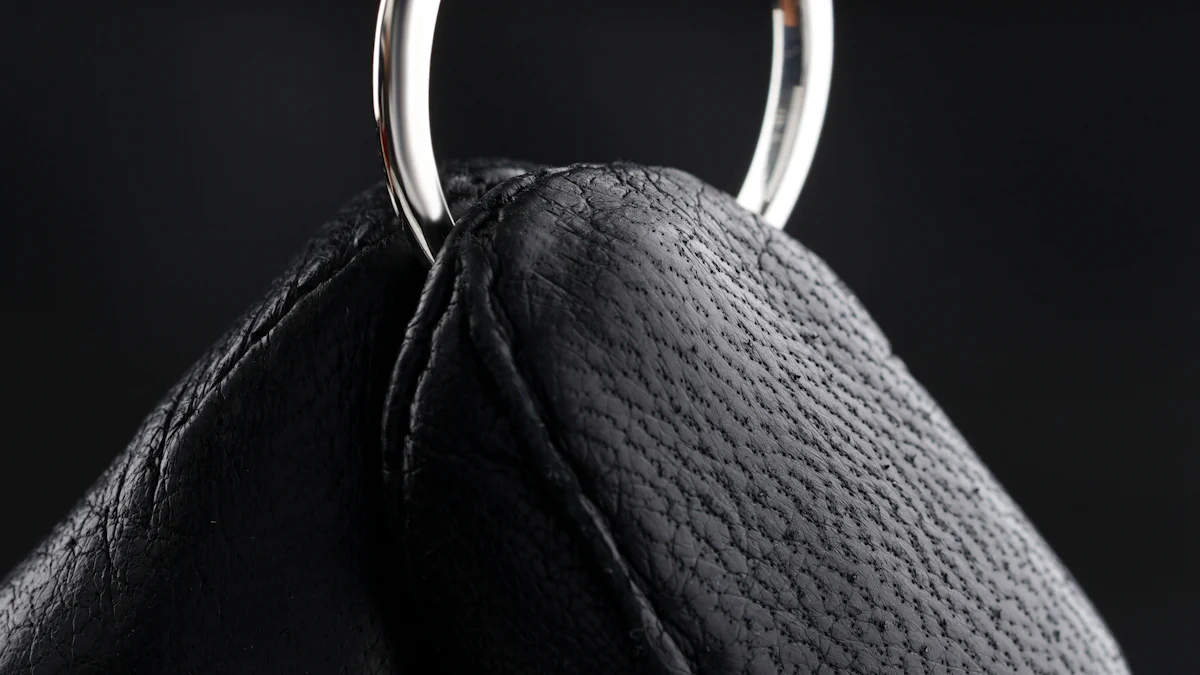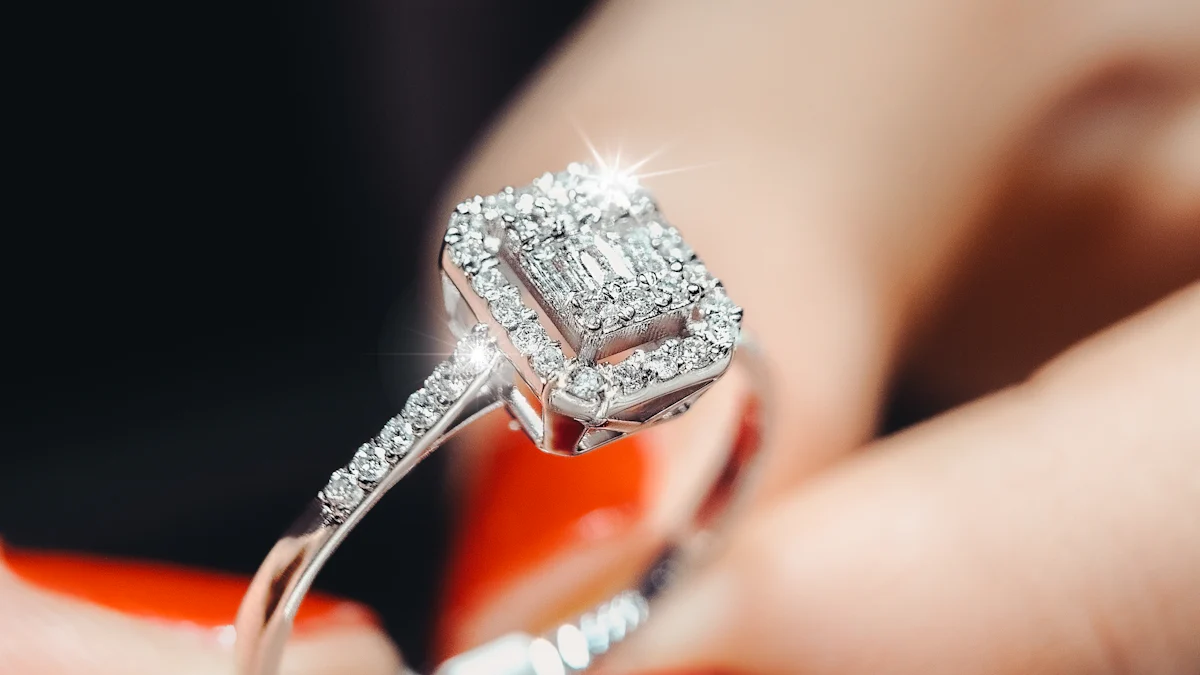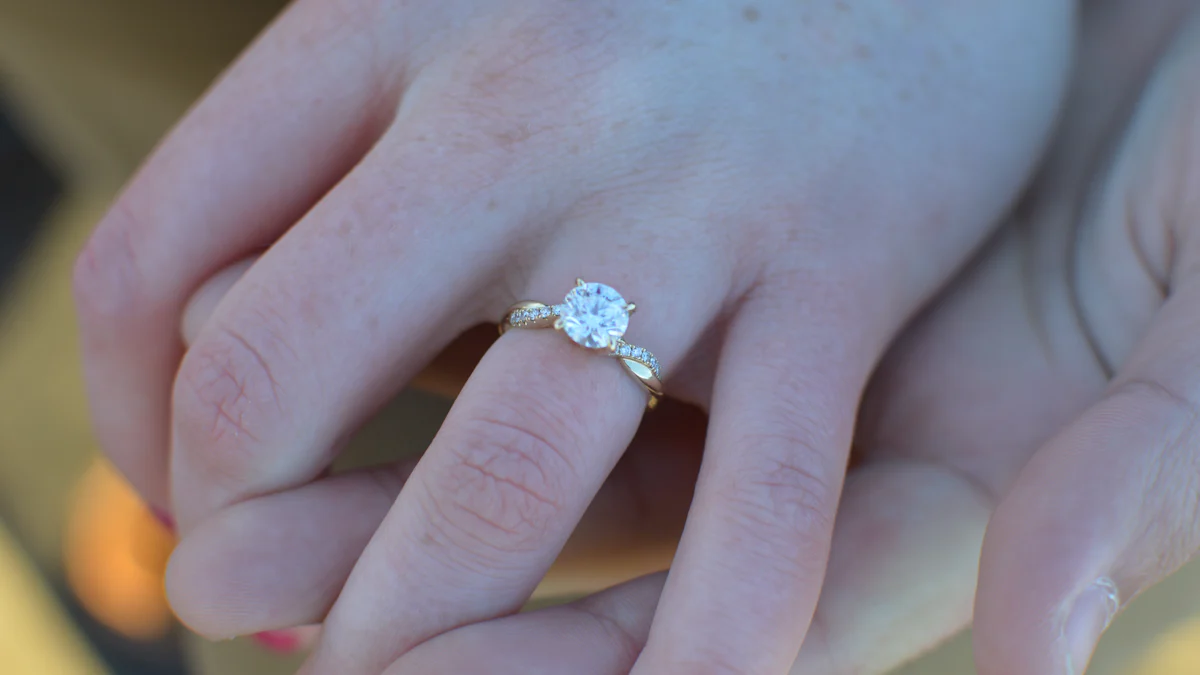Pros and Cons of 1 Carat vs 2 Carat Diamonds

When deciding between 1 carat vs 2 carat diamonds, your choice often reflects your unique priorities. A 1 carat diamond offers a timeless charm with a balance of affordability and practicality. Its smaller size makes it ideal for those who value subtle elegance and an active lifestyle. On the other hand, a 2 carat diamond delivers a bold statement with its larger size and undeniable presence. However, this comes with a higher price tag, making it essential to align your decision with your budget. Your personal style and how you envision the diamond’s visual impact will ultimately guide your selection.
Visual Impact and Size in 1 Carat vs 2 Carat Diamonds

How Size Affects Appearance
The size of a diamond plays a crucial role in its overall appearance. A 2 carat diamond naturally appears larger than a 1 carat diamond, offering a more striking visual impact. However, the perception of size depends on factors like the diamond's cut. A well-cut 1 carat diamond can maximize its surface area, making it appear larger than its actual weight. On the other hand, a poorly cut 2 carat diamond may look smaller than expected.
When comparing these two options, you should consider how much emphasis you place on size. A 2 carat diamond often stands out in a crowd, while a 1 carat diamond provides a more understated elegance. Both options can shine beautifully, but their visual effects cater to different preferences.
The Role of Ring Setting and Finger Size
The ring setting and your finger size significantly influence how a diamond looks when worn. A 2 carat diamond can dominate a ring, especially in a solitaire setting, creating a bold and luxurious statement. This size also pairs well with ornate settings, as it holds its own against intricate designs. In contrast, a 1 carat diamond offers versatility. It complements both simple and detailed settings without overwhelming the design.
Your finger size also matters. On smaller fingers, a 1 carat diamond may appear proportionally larger, while a 2 carat diamond could feel oversized. For larger fingers, a 2 carat diamond might provide better balance. Choosing the right combination of diamond size and setting ensures the ring looks harmonious and suits your personal style.
Cut Quality and Its Influence on Visual Appeal
Cut quality directly impacts a diamond's brilliance and sparkle, regardless of its size. A high-quality cut enhances light reflection, making the diamond appear more vibrant. For example, a well-cut 1 carat diamond can outshine a poorly cut 2 carat diamond, proving that size alone does not determine beauty.
When selecting between 1 carat and 2 carat diamonds, prioritize cut quality. A diamond with excellent proportions and symmetry will maximize its visual appeal. This ensures that whether you choose a smaller or larger diamond, it will dazzle with brilliance and elegance.
Price and Value Considerations for Engagement Diamonds
Cost Differences Between 1 Carat and 2 Carat Diamonds
When comparing the cost of a 1 carat diamond to a 2 carat diamond, the difference can be striking. The price of a diamond increases exponentially with its carat weight. For instance, a 2 carat diamond often costs more than double the price of a 1 carat diamond. This significant jump occurs because larger diamonds are rarer and more desirable.
The price of a 2 carat diamond can range from $6,000 to $80,000, depending on factors like cut quality, clarity, and color. In contrast, a 1 carat diamond offers a more affordable option while still maintaining elegance and beauty. If you are considering a 1.5 carat diamond as a middle ground, it can provide a balance between size and cost. However, the price per carat for a 2 carat diamond is typically higher than that of a 1.5 carat diamond or a 1 carat diamond, making it a more substantial investment.
Rarity and Demand as Price Drivers
Rarity plays a crucial role in determining the price of diamonds. Larger diamonds, such as a two carat diamond, are much rarer than smaller ones. This rarity drives up demand, which in turn increases their price. A 1 carat diamond, while still valuable, is more commonly available, making it a more accessible choice for many buyers.
The demand for larger diamonds often stems from their visual impact and perceived prestige. However, this demand also means you may need to pay a premium for a 2 carat diamond. If you are looking for a diamond that balances rarity and affordability, a 1.5 carat diamond could be a practical option. It offers a noticeable size increase over a 1 carat diamond without the steep price jump of a 2 carat diamond.
Resale Value and Investment Potential
Diamonds are not just symbols of love; they can also serve as investments. Larger diamonds, like a 2 carat diamond, tend to hold their value better over time due to their rarity. This makes them a potentially worthwhile long-term investment. However, the resale value of any diamond depends on its quality, including cut, clarity, and color.
A 1 carat diamond, while more affordable initially, may not appreciate in value as much as a larger diamond. If you are considering a 1.5 carat diamond, it could offer a middle ground in terms of investment potential. It provides a larger size than a 1 carat diamond while being more budget-friendly than a 2 carat diamond. When evaluating the value of a diamond, focus on its overall quality rather than just its size.
Practicality and Lifestyle: Choosing Between 1 Carat vs 2 Carat

Wearability for Everyday Use
When selecting a diamond ring, wearability plays a significant role, especially if you plan to wear it daily. A 1 carat diamond ring offers practicality for everyday use. Its manageable size reduces the risk of accidental damage or snagging on clothing. This makes it an excellent choice for individuals with active lifestyles or professions requiring frequent hand use.
In contrast, a 2 carat diamond ring, while stunning, may feel less practical for daily wear. Its larger size can make it more cumbersome during activities involving manual work. If you lead an active life, you might find a 2 carat diamond less convenient. However, for special occasions or less physically demanding routines, its bold presence can be a showstopper.
Durability and Maintenance Needs
Durability and maintenance are essential considerations when choosing between a 1 carat and a 2 carat diamond ring. Smaller diamonds, like a 1 carat, are often easier to maintain. Their size allows for simpler cleaning and polishing, ensuring they retain their brilliance with minimal effort. Additionally, smaller diamonds are less likely to sustain damage from accidental impacts, making them a durable option for daily wear.
A 2 carat diamond, due to its larger surface area, requires more attention to maintain its sparkle. Dirt and oils can accumulate more visibly, necessitating frequent cleaning. Moreover, the larger size makes it more susceptible to chipping or scratching if not handled carefully. While the beauty of a 2 carat diamond is undeniable, you should consider the additional effort required to keep it in pristine condition.
Suitability for Active Lifestyles
Your lifestyle significantly influences the suitability of a diamond ring. If you have an active lifestyle, a 1 carat diamond ring may align better with your needs. Its smaller size ensures it stays secure and unobtrusive during physical activities. Whether you enjoy sports, gardening, or other hands-on hobbies, a 1 carat diamond provides elegance without compromising functionality.
A 2 carat diamond ring, with its striking appearance, suits those who prioritize visual impact over practicality. However, its larger size can pose challenges during activities that involve frequent hand movement. If you prefer a statement piece for occasional wear, a 2 carat diamond could be the perfect fit. For everyday use, though, you might find it less adaptable to an active routine.
Quality and Sparkle: Beyond Carat Size
The Importance of Cut, Clarity, and Color
The brilliance of a diamond depends on three critical factors: cut, clarity, and color. Among these, the cut holds the most significant influence on a diamond's sparkle. A well-cut diamond reflects light in a way that maximizes its brilliance and fire. This interaction of light with the diamond’s facets creates the dazzling sparkle you see. Studies like The Science Behind the Sparkle emphasize that proportions, symmetry, and polish determine how effectively a diamond refracts and reflects light.
Clarity also plays a role in enhancing sparkle. Diamonds with fewer inclusions allow light to pass through without obstruction, resulting in a cleaner and more vibrant appearance. Similarly, color impacts the overall look. A near-colorless diamond ensures that no unwanted hues interfere with its sparkle. When choosing between 1 carat and 2 carat diamonds, prioritize these aspects to ensure your diamond radiates beauty, regardless of its size.
Balancing Size and Quality for Engagement Rings
When selecting an engagement ring, balancing size and quality is essential. A larger diamond may seem appealing, but if its cut, clarity, or color is compromised, it may lack the sparkle factor that makes diamonds so captivating. For instance, a 1 carat diamond with an excellent cut can outshine a poorly cut 2 carat diamond. The Science of Sparkle highlights that cut quality directly affects brilliance, proving that size alone does not guarantee beauty.
To strike the right balance, consider your priorities. If you value visual impact, a larger diamond might suit your preferences. However, if sparkle and elegance matter more, focus on quality. A smaller diamond with superior cut, clarity, and color will often appear more vibrant and eye-catching than a larger diamond with lower grades in these areas.
Tips for Maximizing Sparkle Within Your Budget
Maximizing sparkle doesn’t always require a hefty budget. By making informed choices, you can find a diamond that offers exceptional brilliance without overspending. Here are some tips to help you:
- Prioritize Cut Quality: Choose a diamond with an excellent or very good cut grade. The Diamond Sparkle: The Secrets of Scintillation study confirms that cut quality has the greatest impact on sparkle.
- Opt for Near-Colorless Diamonds: Diamonds in the G-H color range appear colorless to the naked eye but cost less than those in the D-F range.
- Select Eye-Clean Clarity: Instead of aiming for flawless clarity, choose a diamond with inclusions that are invisible to the naked eye. This ensures beauty without unnecessary expense.
- Consider Slightly Smaller Sizes: A diamond just under a full carat weight (e.g., 0.9 carats) can save you money while maintaining a similar visual impact.
- Choose a Setting That Enhances Sparkle: Settings like halo or pavé can amplify a diamond’s brilliance by reflecting additional light.
By focusing on these factors, you can achieve a stunning diamond that fits your budget. Remember, the impact of cut on sparkle cannot be overstated. A well-cut diamond, regardless of size, will always captivate with its brilliance.
Choosing between a 1 carat and a 2 carat diamond depends on your priorities. A 1 carat diamond offers affordability, practicality, and timeless elegance. Its smaller size allows for higher quality in cut, color, and clarity, making it ideal for daily wear. On the other hand, a 2 carat diamond delivers impressive size and prestige, perfect for those seeking a bold statement piece.
Remember, the best choice aligns with your budget, lifestyle, and desired visual impact. Prioritize quality—cut, clarity, and color—over size to ensure your diamond sparkles brilliantly and suits your unique style.
FAQ
Why does a 2 carat diamond cost so much more than a 1 carat diamond?
The price difference between a 1 carat and a 2 carat diamond stems from several factors. The cost of diamonds increases exponentially with carat weight. Larger diamonds are rarer, which drives up their demand and price. Additionally, the visual impact of a 2 carat diamond adds to its perceived value, making it a premium choice for many buyers.
Does a 2 carat diamond always look twice as big as a 1 carat diamond?
Not necessarily. The size difference between a 1 carat and a 2 carat diamond is noticeable, but it’s not double. For example, a 1 carat round diamond has a diameter of about 6.4 mm, while a 2 carat round diamond measures around 8.1 mm. The increase in surface area creates a larger visual effect, but the difference depends on the diamond’s cut and shape. Fancy shapes like cushion or princess cuts distribute weight differently, making the size difference less pronounced.
What are the 4 C’s, and how do they affect diamond quality?
The 4 C’s—carat, cut, color, and clarity—are the key factors that determine a diamond’s quality and value:
- Carat: Refers to the weight of the diamond. Larger carat weights, like 2 carats, are rarer and more expensive.
- Cut: Impacts how well the diamond reflects light, influencing its brilliance and sparkle.
- Color: Measured on a scale from D (colorless) to Z (light yellow or brown). A colorless diamond holds higher value.
- Clarity: Indicates the presence of inclusions or blemishes. Fewer imperfections result in a higher clarity grade.
When choosing between a 1 carat and a 2 carat diamond, balancing these factors ensures you get the best value for your budget.
Is a 1 carat diamond more practical for daily wear?
Yes, a 1 carat diamond is often more practical for everyday use. Its smaller size reduces the risk of snagging on clothing or sustaining damage during physical activities. If you lead an active lifestyle, a 1 carat diamond offers elegance without compromising durability or convenience.
Are 2 carat diamonds a better investment than 1 carat diamonds?
Larger diamonds, like 2 carats, tend to hold their value better over time due to their rarity. However, the resale value depends on the diamond’s overall quality, including cut, clarity, and color. While a 2 carat diamond may offer better long-term investment potential, a high-quality 1 carat diamond can also retain significant value.
Can a well-cut 1 carat diamond outshine a 2 carat diamond?
Absolutely. The cut quality of a diamond plays a crucial role in its brilliance and sparkle. A well-cut 1 carat diamond can reflect light more effectively than a poorly cut 2 carat diamond. Prioritizing cut quality ensures your diamond dazzles, regardless of its size.
How does finger size affect the appearance of a diamond?
Finger size influences how a diamond looks when worn. On smaller fingers, a 1 carat diamond may appear proportionally larger, creating a balanced and elegant look. A 2 carat diamond, however, might feel oversized. For larger fingers, a 2 carat diamond can provide better balance and visual impact.
What is the best way to maximize sparkle within a budget?
To maximize sparkle without overspending, focus on these tips:
- Prioritize cut quality: Choose an excellent or very good cut grade for optimal brilliance.
- Opt for near-colorless diamonds: Diamonds in the G-H color range appear colorless but cost less than D-F grades.
- Select eye-clean clarity: Look for diamonds with inclusions invisible to the naked eye.
- Consider slightly smaller sizes: A diamond just under a full carat weight (e.g., 0.9 carats) offers savings with minimal visual difference.
- Choose a sparkle-enhancing setting: Settings like halo or pavé amplify brilliance by reflecting additional light.
Does a 2 carat diamond require more maintenance than a 1 carat diamond?
Yes, a 2 carat diamond typically requires more maintenance. Its larger surface area makes dirt and oils more visible, necessitating frequent cleaning. Additionally, the increased size makes it more susceptible to chipping or scratching. A 1 carat diamond, being smaller, is easier to clean and maintain, making it a practical choice for daily wear.
Which diamond size is better for me: 1 carat or 2 carat?
The best diamond size depends on your priorities. A 1 carat diamond offers affordability, practicality, and timeless elegance, making it ideal for daily wear. A 2 carat diamond provides impressive size and prestige, perfect for those seeking a bold statement piece. Consider your budget, lifestyle, and desired visual impact to make the right choice.
See Also
What Is the Price of a 2 Carat Lab Diamond
What Size Does a 2.25 Carat Diamond Have
Comparing Tungsten Diamond Rings to Traditional Options

